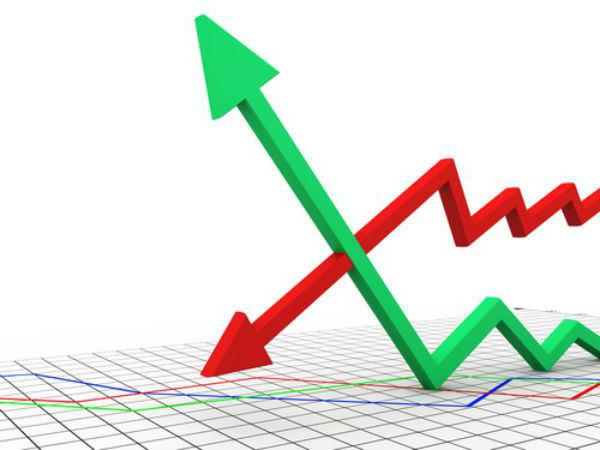The analysis made in order to identify financial stability is very important both for the enterprise itself and for its investors. It allows you to assess the state of financial, economic and core activities and draw preliminary conclusions about the feasibility of investing its activities with various sources of capital.
general characteristics
Ratio of security (Coverage ratios) is an indicator capable of assessing the ratio of own to borrowed capital of an enterprise. On its basis, investors conclude that the solvency and attractiveness of financing for them the core business of the company.

The equity ratio is analyzed in the short term, many financiers and economists attribute it to the group liquidity indicators. That is, it shows the structure in the form of a ratio of funds (borrowed and own).
In the case when own financial sources in the current period are insufficient, the entire production process is financed from credit funds. In the case when not only current, but also some of the non-current assets are formed from borrowed funds, this indicates a low stability and solvency of the enterprise. The asset security ratio should be consistent with the standard.
Normative value
amount own working capital standardized and established by law.

If you rely on RF Decree No. 498 of May 20, 1994, the ratio of own working capital should be more than 0.1 (10%).
This indicator allows us to draw conclusions about the state of the balance sheet structure and its compliance with the requirements of the organization of financial, economic and core business of each enterprise. In arbitration practice, this ratio is not used, but is recommended for the assessment.
The value of normative indicators may vary depending on the business sector, but only to a greater extent.
Calculation formula
There is a certain formula for calculating the security ratio, which has the following form:
KOSS = (Equity - Non-current assets) / Current assets.
If we consider the legislatively established balance of enterprises (Form No. 1 of the accounting report), then this formula will look like this:
KOSS = (p. 1300 - p. 1100) / s. 1200.
Equity is a less risky source of financing the core business of the company, therefore, the profit from it is minimal. To increase the scale of production, the company can attract borrowed investments. To determine the optimal level borrowed / own funds apply the calculation method financial leverage.
Stock security
Another important factor related to the analysis of solvency and stability of the enterprise is the security of the assets of the balance sheet own sources. It reflects the share of inventories and costs that were covered by their sources of investment.
The coefficient of security reserves is calculated as follows:
KOZ = Equity in circulation / Inventories.
In more detail, this formula will look like this:
KOZ = (Equity + Long-term liabilities - Non-current assets) / Inventories.
If you make calculations based on the information of Form No. 1 of the accounting report, the reserve ratio will be as follows:
KOZ = (s. 1300 + s. 1400 - s. 1100) / s. 1210.
The normative value of the calculated indicator must be in the range of 0.6-0.8.At least 60-80% of the company's total reserves should be produced using equity.
Business Sectors
The working capital ratio is recommended slightly above 10% for a number of industries. The lowest minimum value of this ratio of assets balance of assets working capital recommended in the field of engineering, trade and catering, non-production types of consumer services and housing. The standard here is 0.1.
Slightly higher the minimum level of equity capital (0.15) should be for enterprises for the production of building materials, construction, transport, radio, as well as sales and logistics.
20% of its own liabilities should cover the assets of enterprises such as chemical, metal, engineering, light industry, agriculture, science and other business sectors.
The largest level of coverage of balance sheet assets is observed in the fuel industry and gas supply. The equity ratio here should be at least 0.3.
Analysis example
Suppose, at the beginning of the analyzed year, our own sources amounted to 201.21 million rubles. At the end of the year they already amounted to 190.14 million rubles. At the beginning and end of the period, fixed assets amounted to 125.31 million rubles, respectively. and 124.8 million rubles. At the same time, current assets of the year at the beginning of the period amounted to 200.24 million rubles, and at the end - 256.81 million rubles.
The security ratio must not only be determined, but also track its change over the year.
First, the indicator is calculated at the beginning of the period:
KOSS1 = (201.2 -125.31) / 200.24 = 0.379.
At the end of the year, the security ratio will be equal to:
KOSS2 = (190.14-124.8) / 256.81 = 0.254.
The change in the calculated indicator will be:
ΔCOSS = 0.254 / 0.379 = 0.671.
The ratio decreased by 49% for the analyzed period.
How to understand the meaning of analysis
The security ratio, the calculation formula of which was given above, has its own interpretation. So, if the indicator in the analyzed period increased, this indicates an increase in the financial stability of the company, its equity or a decrease in accounts payable.
However, if the security ratio decreased, as was shown in the example above, this indicates a decrease in financial stability and equity. Sometimes this is due to an increase in the structure of the balance of borrowed capital.
Having familiarized themselves with the essence and methods of calculating and interpreting such an instrument as a security ratio, each investor and manager of a company can draw conclusions about the advisability of financing its activities from borrowed capital. The presented indicator indicates the stability and solvency of the enterprise. Therefore, it is so important in the analysis of the financial and economic, core and investment activities of each company. This will help to adjust the development paths of the enterprise and make it as attractive as possible for investors. After all, they will help to expand production capabilities with the right approach to business.
